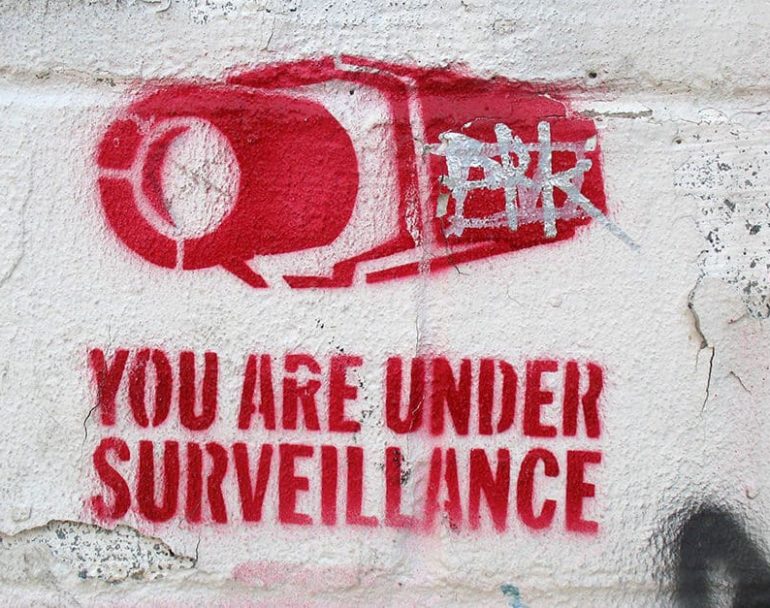
Documents Reveal More Details About Massive Federal Telephone Surveillance Program
Documents obtained by the Electronic Frontier Foundation (EFF) reveal more about a super-secretive partnership between federal agents and AT&T to run a massive telephone surveillance program.
Hemisphere was first publicly disclosed in a New York Times article back in 2013 after a citizen activist in Seattle discovered the program through an open records request.
Here’s how the EFF describes Hemisphere.
Through the Hemisphere program, AT&T assists federal and local law enforcement in accessing and analyzing its massive database of call detail records (CDRs)—information on phone numbers dialed and received, as well as the time, date, and length of call and in some instances location information. More specifically, Hemisphere has access to telecommunication “switches” operated by AT&T that guide telephone calls. Because other providers use AT&T “switches” for their calls, the database contains call detail records regardless of carrier. The database has records concerning local, long distance, cellular, and international calls. Official government presentations estimate 4 billion call detail records populate the Hemisphere database on a daily basis. That includes records dating as far back as 1987, which is much further back than the records most telcos store.
AT&T employees help run the program, working within law enforcement agencies in LA, Houston and Atlanta. The feds pay their salaries through the White House’s Office of National Drug Control Policy (ONDCP) through its High Intensity Drug Traffic Areas (HIDTA) program.
The federal government wrapped the program in secrecy. This includes intentionally leaving the detail of its use out of arrest reports and court proceedings. Federal agencies used data collected from Hemisphere for parallel construction – a practice former NSA Chief Technical Director William Binney called the country’s “greatest threat since the Civil War.”
Here’s how EFF explained it.
After using Hemisphere, cops devise a second, more conventional way to obtain the information, and put that reverse-engineered method down on paper. The result is that law enforcement lies about the origins of its investigative methods, which also prevents individuals they target from knowing about, much less challenging, the surveillance.
EFF pierced the veil of secrecy through a lawsuit and recently released documents it obtained. EFF attorney Aaron Mackey outlined the scope of the program in an interview with Courthouse News Services.
“The government has worked with AT&T to create this database where there are almost no barriers to law enforcement’s ability to access the information. Retention is forever.”
To access phone records through Hemisphere, DEA agents had to follow two steps.
- Fill out a form
- Obtain an administrative subpoena.
The agency seeking the information issues administrative subpoenas. In other words, the DEA issues a subpoena on its own behalf with no judicial input. Mackey called this an inherent conflict of interest.
“There’s no third party overseeing the initial request,” Mackey said. He also told Courthouse News Service that he found no indication that DEA agents were required to state a justification for obtaining phone records in Hemisphere request forms.
According to EFF, the government can also use pattern analysis of data to track people’s social networks, physical locations and movements.
Unsurprisingly, government officials defended the unconstitutional program and the secrecy surrounding it. In an email obtained by EFF, an official referred to the program as nothing more than a “Super Search Engine” and a “Google on Steroids.” As the EFF wrote shortly after discovering the email:
Such descriptions confirm EFF’s worst fears that Hemisphere is a mass surveillance program that threatens core civil liberties.
The program poses severe Fourth Amendment concerns because police are obtaining detailed private information from the call records and learning even more about people’s social connections and physical movements based on pattern analysis. Federal officials do all of this without a warrant or any judicial oversight.
But beyond the Fourth Amendment problems, Hemisphere also poses acute risks to the First Amendment rights of callers caught in the program’s dragnet. Specifically, Hemisphere allows police to see a person’s associations, shedding light on their personal connections and political and social networks. It’s not hard to see such a tool being trained on activists and others critical of law enforcement, or being used by the government to identify entire organizations.
You can read more about what the documents uncovered by EFF revealed HERE.
This is just one of many federal government spy programs that operate outside of the Fourth Amendment with the support of state and local governments, and corporations like AT&T.
States can end cooperation with warrantless spying by prohibiting “material support or resources” to assist federal agencies in their actions. Michigan enacted a law doing just that earlier this year. They can also disincentivize corporations by passing the CHOICE ACT. This law penalizes corporations that work with federal spies by denying them access to state contracts. This forces companies to chose: do business with the NSA and support its rights violating operation, or refuse to provide such support and do business with the state.